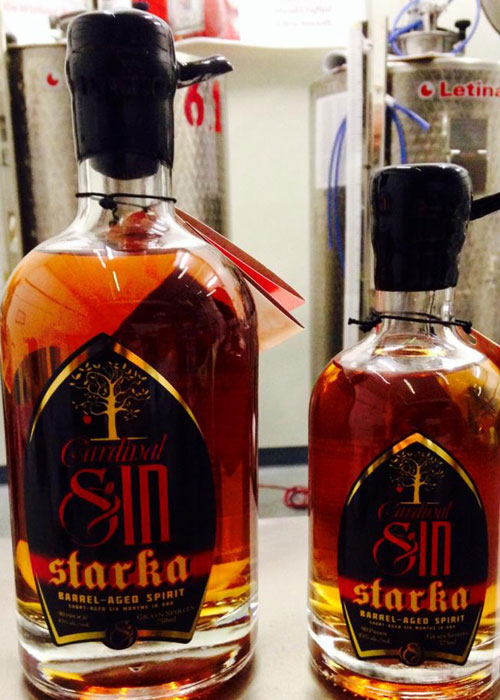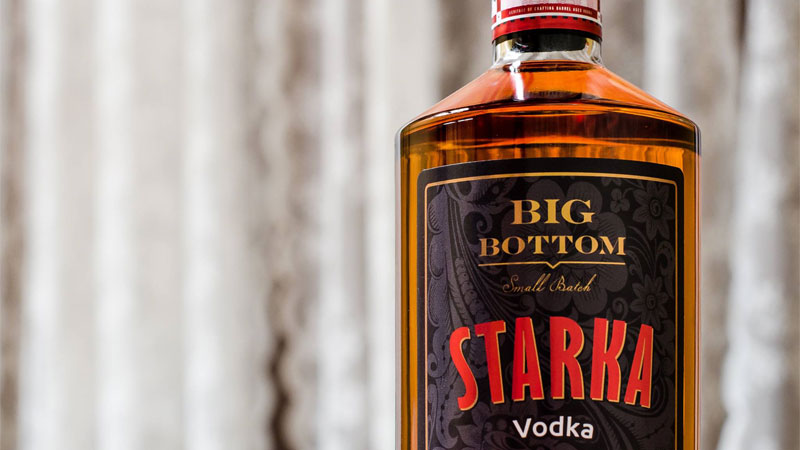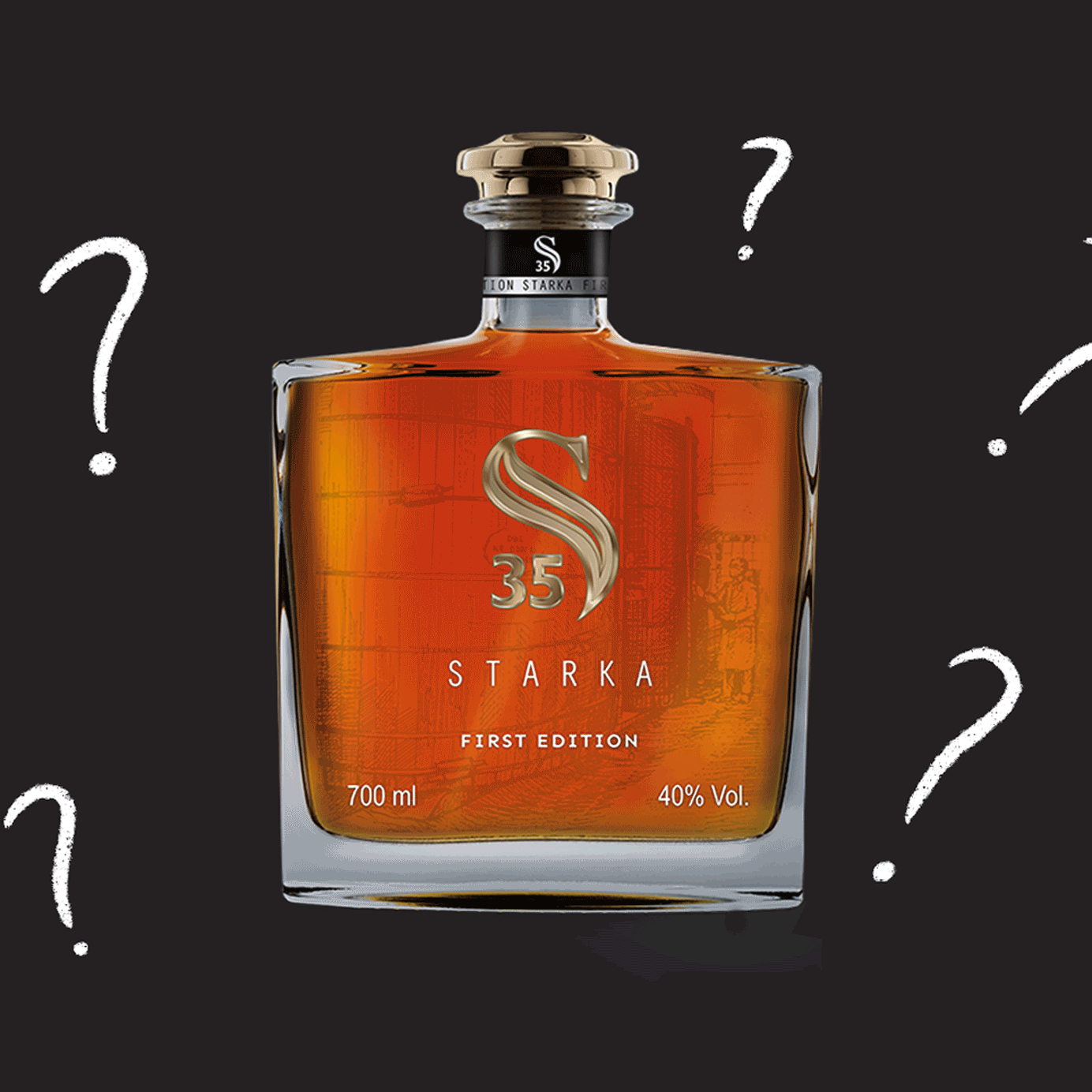Italian amaro, German kräuterlikör, and Korean soju have all taken turns as trendy new spirits of the moment, jumping from relative obscurity to widespread popularity. Considering both the growing interest in brown spirits and the global thirst for products with a great backstory, starka seems like a natural contender for the next big thing. The only problem? Almost no one outside Eastern Europe seems to know what starka is yet.
Until about 2012, that even included David Lesperance, whose wife Katarzyna Lesperance now owns one of the most famous original starka distilleries in Poland, Szczecińska Fabryka Wódek Starka.
“I had never had starka before we bought the company,” Lesperance says, recalling his first taste of the spirit. “My first reaction was ‘Calvados.’ But it’s clearly rye.”
Made of 100 percent rye grain and sometimes seasoned with apple, pear, or linden leaves, starka originated in Poland and neighboring Baltic countries before the 15th century. Unlike vodka, it is aged extensively in oak barrels, ultimately rendering it more like whiskey or Normandy’s apple brandy, Calvados, both of which must be aged in wood, according to French and European Union regulations.
“It’s got the viscosity of a single malt,” Lesperance says. “It looks like a single malt — like an Islay malt, actually. And it smooths out a lot over the years.”
Those years of aging can be quite extensive. Wódek Starka might be best known for its 25-year-old expression, but the company regularly releases 50-year-old starka, and it currently has stock dating back to 1947, according to Lesperance.

Why No One Has Heard of Starka
Such a history should have helped to spread starka’s renown well beyond the former Eastern Bloc. But Cold War politics kept starka completely out of the West until 1989, after which Wódek and many of the other companies that made starka often had major financial problems, including bankruptcies, despite having been extremely “successful” enterprises under communism, Lesperance says.
“When you look at our inventory, you see enormous amounts that were produced in the ‘50s, ‘60s, and ‘70s, because they were politically connected,” Lesperance says. “The reason [Wódek] went into receivership is because it was run by people who never understood a market economy.”
That means that most starka connoisseurs either come from the drink’s homeland or discovered it while visiting there.
Tim Kearney, a professor of economics at New Jersey’s Centenary University, first read about starka’s origins while studying abroad in Poland during his undergraduate years at the University of Pittsburgh.
“The story goes that when a child was born in those days — this is in the 15th, 16th, and 17th centuries — they’d pour rectified rye spirits into barrels that had been used for Tokaji wine, seal them up with beeswax, and bury them until the child got married,” he says, referring to the great dessert wine from Tokaj, Hungary, a renowned drink throughout Central and Eastern Europe. “Being from Pennsylvania, when I was coming up, rye never went out of style. That was what whiskey was to us — Old Overholt. Rye was a thing. So I thought ‘Wow, that sounds pretty interesting.’”
After first tasting seven-year-old starka as a curious undergraduate, Kearney tried it again on subsequent trips to Poland over the years. “My father-in-law would buy me a bottle, I’d go over there and share it with him,” he says. “That’s 10 to 12 years ago, and it was getting increasingly difficult to find.”

Where to Find Starka
While the aged stock at Wódek is “hibernating” in preparation for its eventual return to market (which is, according to the brand, “TBD”), a few other producers outside Poland have put their own versions of starka out to market. In Eastern Europe, that includes only a couple of still-existing makers, like Vilniaus Degtinė and Stumbras in Lithuania.
In the United States, a few modern craft distilleries have attempted to create their own versions of starka, including Missouri’s St. Louis Distillery. Its Cardinal Sin Starka came about largely by accident, says the distillery’s co-owner Dr. William Schroer, who met the owners of McGinnis Wood Products, a renowned local cooperage and stave mill, through his day job as an orthopedic surgeon. (Mr. and Mrs. McGinnis visited Schroer’s office for a consultation about a bad knee). At the time, St. Louis had plenty of award-winning, high-grade rye vodka on hand. Aging some of that in oak seemed like a fun twist.
“Missouri white oak is widely considered the best oak in the world from which to make charred barrels,” Schroer says. “We thought it would take two years to make something palatable, and we were shocked how quickly the spirit takes up the char and oak. Once we had two barrels of vodka aging, we went online and discovered the history of starka. So we backed into the European tradition by happenstance.”
Other versions of starka have shown up in Oregon, where three craft distilleries — Big Bottom Distilling, Bull Run Distilling, and Indio Spirits, now known as Rose City — launched a collaborative Oregon Starka Project in 2014. Most craft versions are aged fairly briefly, on the order of many months, rather than many years.
“We put an incredibly smooth spirit into the barrel,” Schroer says. “Nine months later, we have an incredible smooth starka.”
For fans like Kearney, actually getting the well-aged original can take a bit of work. For Kearney’s 50th, his wife managed to import four bottles of 25-year-old Wódek Starka with help from a friend in Poland. Kearney has just one of those bottles left, though he says that he has since made contingency plans.
“My son, for Christmas two years ago, he got me a barrel,” he says. “I have it in my basement. I filled it with Tokaji for a little while, [then] emptied it out. Now I have Sobieski 100 percent rye vodka in my barrel, with a little bit of linden leaves. It’s been in that barrel for about eight months now. We’ll see what I get.”
Ed. note: This story originally stated that David Lesperance is a co-owner of the Szczecińska Fabryka Wódek Starka distillery. Katarzyna Lesperance is 100 percent owner of the company.
